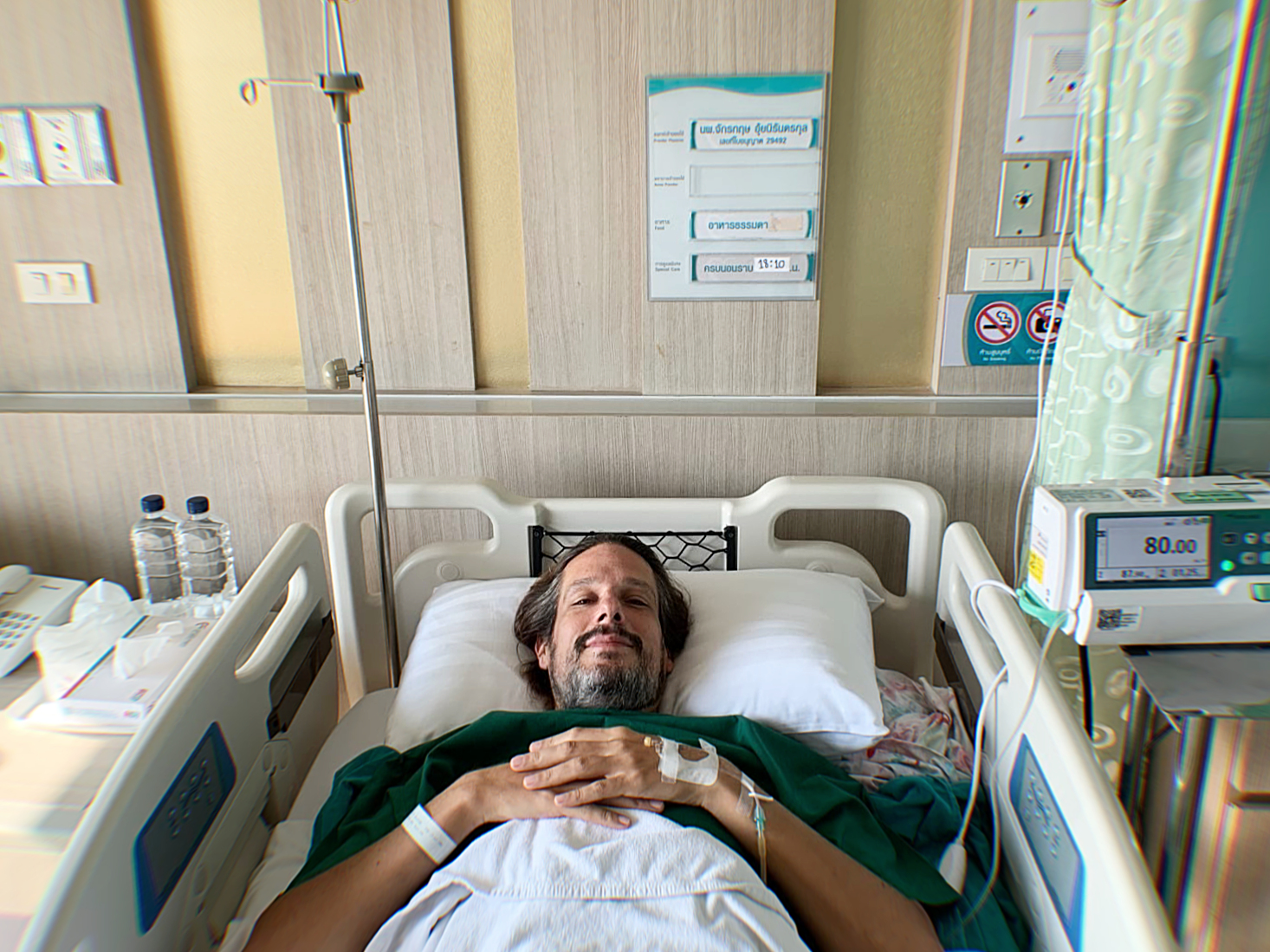
Finally healing
Retrospect
Over the past 5-10 years, I have tried to heal a recurring hernia from my youth without going to the hospital and have changed a large part of my lifestyle in an attempt to do so.
In the course of my healing journey, I was able to reduce my excess weight and banish many other minor and major problems from my life, such as joint pain, chronic nasal congestion and headaches.
Despite the many positive developments during this time, certain things didn't get better or even worse.
The hernia for instance started to bother me more, so much so that I could hardly do anything without wearing a rather uncomfortable hernia belt.
My balance also got worse over time, especially as my legs became more and more numb.
Plastic remnants
In mid-2024, I learned that many of my symptoms were probably not directly related to the hernia, but rather to how it had been “repaired” in my youth. At that time (in 1994), I had a mesh installed that my body was trying to fight off even 15 years after the operation, which led to severe pain and repeated fainting spells in all that years.
As I know today, early versions of these meshs often did not degrade in the body, so that they could become brittle over time and then cause nerve damage with their sharp edges, among other things.
Thousands of lawsuits against the manufacturers of these meshs are still being fought worldwide.
The search
After a long search, I luckily found a surgeon at Bangkok's Bangpakok 9 International Hospital at the end of 2024 who was not only willing to look for plastic remnants in my abdomen but also to repair the hernia without installing a new mesh.
In consultation with the surgeon, my wife and I then opted for the Desarda method to repair the hernia. Shouldice, another popular method for repairing inguinal hernias, was out of the question, as it can only be used for first-time and not recurrent inguinal hernias. If Desarda had not been possible, e.g. because my tissues could have been in too poor of a condition, the Lichtenstein method was available as a plan B. The Lichtenstein method differs from Desarda mainly in that it uses a different type of suture.
The operation in detail
- The operation itself then proceeded in such a way that I first had my blood pressure, ECG etc. measured.
- I was then prepared for anesthesia and driven to the operating theater, as the operating surgeon always called it, where I was placed in the embryo position and the long syringe with the spinal block anesthesia was inserted into my spine.
- The surgeon then cut an opening of about 6-8 cm in the abdominal wall (in several attempts so as not to damage any tissue or nerves or the vas deferens underneath) and then first of all pulled out the vas deferens a little and secured it on the side of the opening.
- He then looked for the plastic remnants and removed them.
- Afterwards, he pulled out the hernia sac and at the same time cut it off at the beginning and cauterized it (he used a hot knife for all the incisions so that hardly any blood flowed during the operation).
- Tissues from my own body were then used to overlay and individually suture the individual layers of injured tissues and to close the hernia.
- Finally, the vas deferens was repositioned and the abdominal wall was closed and sutured.
The origins of my hernia
The surgeon told us that my hernia was a so-called indirect, congenital hernia. According to him, it was a defect that had already developed when I was still a baby. This was when the testicles migrated from the inside of the body through the two inguinal canals into the scrotum.
Normally, once this testicular migration is complete, the inner and outer rings of the inguinal canals are closed, which in my case apparently did not happen on the right side, resulting in a weak point in this region, which later allowed the hernia to occur in the first place.
Recovering
As I am writing this text, I am already recovering from the operation. I'm currently lying down almost permanently and trying to take it extra easy. Everything has gone well, so that I am now finally and conclusively healing and will then be able to restart my life. 🥳
Happy end
I am incredibly grateful for the journey, all the things I have learned along the way, the support, especially from my wife, but also from all the many lovely people who encouraged me and sent me positive energy for the operation, and I can still hardly believe that the happy end to this story is now finally underway. 😇